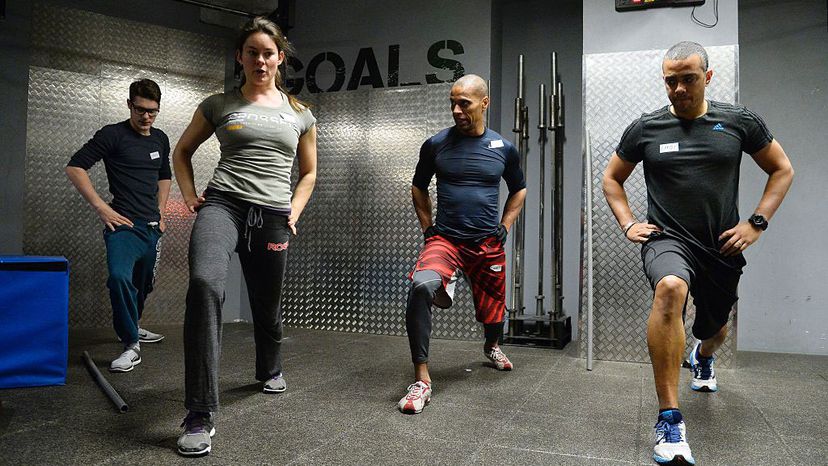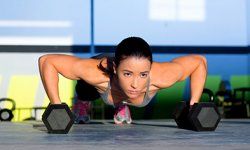
Although the stereotyped image of a fitness club is a room crowded with people walking treadmills and using weight machines, that picture is as stale as, maybe, your exercise routine. In late December 2017, the Wall Street Journal reported that many traditional health clubs were scaling back on exercise machines and beefing up their group fitness class offerings, in response to consumer demand.
Which got us thinking: Which groups prefer fitness classes as opposed to using equipment? A 2017 study by the International Health, Racquet & Sportsclub Association (IHRSA) found that more than 57 million Americans belonged to at least one health club, and while gym memberships were split almost evenly between males and females, the two groups prioritized their gym activities very differently.
Advertisement
"Males tend to be equipment-oriented, engaging more in using free weights (dumbbells, hand weights and barbells), weight/resistance machines, rowers and stationary cycles," says Melissa Rodriguez, senior research manager for the IHRSA in an email interview. "Women prefer to participate in group exercise programs, such as Pilates, dance, step, and other choreographed exercise to music, yoga and barre."
Obviously, there are men who enjoy classes and women who lift weights, but in general it has not been the norm. "This is a combination of social dynamics, men tending to be more solo and women tending to gravitate towards the community, and men thinking the classes themselves are geared towards women and their goals," says Doug Holt with Fitness Professionals Online.
But this dynamic could also be changing. The same study found that men and women had almost the same levels of participation in "fitness-only and personal or small group training (P/SGT) studios" (think CrossFit or kickboxing studios). This trend is likely to continue as Millennials and Generation Z (those under 18) tend to favor these types of workouts, along with HIIT, barre, yoga and group cycling. IHRSA reported that the average age of a studio member is 30, and nearly half of all health club members are 18-44.
"Because functional training continues to grow in popularity, there's less of a need for specific age groups, and/or genders to be reliant on machines," says Josh Leve, founder of the Association of Fitness Studios in an email. "Bodyweight training is very popular and ensuring that you can move well into your 60s and 70s is high on the list of areas trainers, studios and health facilities tend to focus on."
But equipment (ellipticals, free weights and treadmills) is still the primary workout for Gen Xers, with boot camp being the only non-equipment-based activity listed as a favorite with this age group. Not surprisingly, Boomers and members of the Silent Generation (typically those born between 1925-45) prefer the gentler routines like water aerobics, Tai Chi and stretching, though they also favor weight machines.
Advertisement

